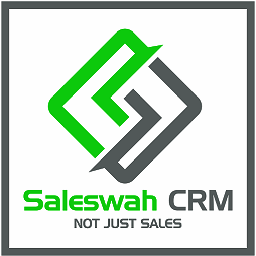What Is Territory Management Software?
Territory Management Software is a sophisticated tool that helps firms manage and optimize their sales territories. It is a technology-driven solution that enables businesses to split and assign particular geographic areas to their sales teams, strategically schedule customer visits, and track sales performance data in real time. The software provides a consolidated platform for sales managers to visualize their territory, make educated decisions, and track the performance of their sales agents.
It offers detailed insights on customer demographics, behavior, and sales potential, allowing businesses to tailor their sales strategy to each territory. Furthermore, Territory Management Software automates tedious activities and optimizes processes, freeing sales teams to concentrate on developing customer connections and closing agreements.
It also aids in the identification of new sales prospects and possible territories for expansion, resulting in increased revenue and growth. Territory mapping, territory planning and alignment, lead and sales monitoring, performance analytics, and connectivity with CRM and other sales tools are all important elements to consider when selecting Territory Management Software.
What Are The Recent Trends In Territory Management Software?
Territory management software has evolved swiftly to keep up with the ever-changing corporate world. With the rise of remote work and the growing need for fast and successful sales processes, there have been a few recent changes in territory management software that buyers should know about. These trends emphasize the necessity of selecting the correct territory management software to help firms stay competitive in their marketplaces.
1. Automation And Artificial Intelligence (AI): One of the most significant advancements in territory management software is the combination of automation and artificial intelligence. These innovative solutions enable firms to automate and streamline territory management activities, saving time and enhancing efficiency. Sales teams can use AI-powered capabilities such as lead scoring, predictive analytics, and territory mapping to prioritize leads and optimize territories for optimum productivity.
2. Mobile Accessibility: Another major trend in territory management software is a focus on mobile accessibility. As sales teams become more mobile, territory management software must be accessible from any device and location. This enables sales reps to update and access their territories in real time, increasing productivity and responsiveness to customer needs.
3. Integration With CRM: Territory management software is being built to work smoothly with customer relationship management (CRM) systems. This interface provides a more comprehensive view of customer and sales data, revealing significant insights for improving sales strategies and prioritizing regions. It also eliminates the need for manual data entry, lowering the likelihood of human error.
4.Predictive Analytics: Predictive analytics is becoming an increasingly important component of territory management software. This technology predicts future sales patterns by analyzing data from previous sales activity, market trends, and consumer behavior, allowing organizations to make informed decisions for their territories. Sales teams can use this useful knowledge to create and execute targeted sales tactics in advance.
5. Real-Time Data And Reporting: Territory management software now provides real-time data and reporting capabilities, allowing sales teams to rapidly monitor their progress and success. This feature enables fast alterations in territory, ensuring that sales professionals focus on the most promising leads and opportunities.
Benefits Of Using Territory Management Software
Territory management software is an essential tool for companies of all kinds, particularly those with a large sales force or many locations. This type of software provides numerous advantages that can dramatically increase sales productivity, customer satisfaction, and overall business performance.
Let's explore, we'll look at the main advantages of adopting territory management software and why it should be considered a critical investment for your company.
1. Improved Territorial Structure And Management: One of the key advantages of employing territory management software is its ability to assist firms in efficiently organizing and managing their territories. This software allows you to simply build and distribute territories to your sales reps based on geographical area, customer type, or any other criteria that is relevant to your company model. This guarantees that each region is assigned to the best-suited sales representative, resulting in more targeted and individualized sales efforts.
2. Improved Sales Productivity And Efficiency: Sales reps can use territory management software to gain immediate access to all of the information they need about their given areas, including leads, customer information, and previous interactions. This eliminates the need for manual data entry, saving time while enhancing sales productivity. This software helps improves the sales process by automating chores like lead routing and scheduling, freeing up sales people to focus on selling rather than administration.
3. Enhanced Teamwork And Communication: Territory management software enables easy coordination between sales representatives and managers. A unified platform allows team members to readily communicate information, updates, and comments, resulting in improved communication and alignment within the sales team. This results in enhanced teamwork, better decision-making, and a more integrated sales strategy.
4. Increased Client Satisfaction: Sales reps can use territory management software to create a more personalized and customer-centric approach to their sales activities. They may adjust their pitches and interactions based on their knowledge of each market and its specific consumer needs. This results in a better client experience, higher satisfaction scores, and enhanced customer retention.
5. Real-Time Data And Analytics: Data is essential for any business, and territory management software gives real-time insights and analytics to help you make sound decisions. These insights may include sales performance, customer data, territorial profitability, and so on. With this important information at your fingertips, you can constantly adjust and tweak your sales plan to get optimum results.
Important Factors To Consider While Purchasing Territory Management Software?
When it comes to choosing territory management software, there are a few key elements to consider. These characteristics might have a significant impact on the software's performance and efficiency in controlling territories for your firm.
Here are the essential elements to consider while analyzing and selecting territory management software for your organization:
1. Scalability: One of the most significant considerations is the software's scalability. As your company grows, the needs and demands of your sales crew may shift. It is critical to invest in territory management software that is adaptable and scalable to your business. This saves you the headache of frequently switching to new software and ensures that your investment is future-proof.
2. Features And Functionality: The territory management software's features and functions should also be taken into consideration. Make careful to assess your company's specific demands and opt for software that includes capabilities that are relevant and required to your business operations. Territory mapping, real-time data tracking, lead management, and performance analytics are some of the most important elements to consider.
3. User-Friendliness: The software's usability is also an important consideration. A user-friendly interface and simple navigation can help you and your team save time and money on training and learning how to use software. Look for software with a straightforward and user-friendly interface to provide a smooth onboarding experience.
4. Integration Capabilities: The territory management software you select should interact seamlessly with your existing systems and tools. This ensures smooth data flow and eliminates the need for manual data entry, saving you time and lowering the possibility of errors. Look for software that integrates easily with your company's existing CRM, marketing, and analytics platforms.
5. Customer Assistance: Effective customer assistance is critical to the effective adoption and use of territory management software. Make sure to explore the software provider's customer service options, which may include live chat, phone assistance, and email help. Look for software vendors who are regarded for providing good customer care and timely and quick support.
6. Cost And ROI: While software costs are essential, they should not be the only deciding factor. Look for software vendors with flexible price plans and transparent cost structures. Consider the possible returns on investment (ROI) that the software can provide for your company in terms of greater efficiency and productivity.
When selecting territory management software for your organization, consider these aspects to make an informed decision. Remember that each organization has distinct demands and requirements, so thoroughly research and compare various software solutions before making a decision.
What Are The Key Features To Look For In Territory Management Software?
Territory management software is a powerful tool that allows organizations to effectively manage their sales territory and increase team efficiency. When contemplating purchasing territory management software, it is critical to compare the features of each option to verify they match your individual demands and expectations.
The following are the essential things to look for in territory management software:
1. Mapping And Visualization Capabilities: The software should have simple mapping and visualization features that allow you to quickly view your regions. This tool can help you spot any gaps or overlaps in your regions and make necessary revisions.
2. Customizable Territory Hierarchy: Look for software that lets you construct and tailor your territory hierarchy to your specific business structure. This functionality allows you to manage territories at multiple levels, including regions, countries, and sub-regions.
3. Resource And Capacity Planning: A good territory management software should have capabilities for allocating the proper sales people to the correct territories based on their talents, expertise, and workload. This can help to improve efficiency and ensure that each territory is administered effectively.
4. Routing And Scheduling: The program should include a powerful routing and scheduling tool that allows you to create and optimize routes for your sales representatives. This can help you save time and money on unneeded travel.
5. Performance Tracking And Reporting: With this tool, you can measure your sales team's performance by region, allowing you to identify top-performing territories as well as areas for development. It can also provide useful insights into future area planning.
6. Collaboration And Communication Tools: Look for software that has collaboration and communication features to improve communication between the sales staff and management. This can help everyone stay on the same page and make decisions more efficiently.
7. Integration With Other Software: Look for territory management software that works seamlessly with your existing CRM, ERP, or other sales management systems. This can increase data accuracy while reducing the amount of human data input work.
8. User-Friendly Interface: The software's interface should be straightforward and easy to browse, with clear instructions. This can help to decrease the learning curve and guarantee that the program is efficient and easy to use.
9. Training And Support: Select a software vendor that provides extensive training and support to ensure that your team is comfortable and proficient with the product. This might help you get the most of your investment.
10. Cost And scalability: Finally, think about how much the software costs and how scalable it is. While it may be tempting to choose a lower-cost choice, it is critical to consider the long-term value and whether the software will expand with your organization.
By carefully examining these critical aspects, you can choose the territory management software that best corresponds with your company's goals and drives sales team performance.
Why Do Businesses Need Territory Management Software?
Businesses use Territory Management Software (TMS) because it provides a comprehensive solution for efficiently managing and optimizing sales territory. With the ever-changing market landscape, businesses face enormous pressure to generate sales, cut expenses, and stay ahead of the competition. TMS helps them reach these objectives by providing simple tools and data-driven insights that empower sales teams and improve overall performance.
One of the most significant benefits of TMS is its ability to strategically allocate sales territories based on a variety of variables, including client demographics, geographical coverage, and sales potential analysis. This guarantees that sales agents work in the most efficient and productive territory, resulting in improved sales and revenue. Furthermore, TMS allows organizations to effectively track and evaluate sales success in each territory.
Managers may discover top-performing areas as well as those that require improvement by offering real-time data and analytics. This enables companies to make informed decisions and efficiently deploy resources in order to increase sales and profitability. TMS also offers improved communication channels and collaboration capabilities, allowing sales teams to work together and share critical information within and between regions.
This not only improves team dynamics, but it also helps with sales techniques and client involvement. TMS also includes capabilities like route optimization, lead management, and performance tracking, which help to boost efficiency and productivity. Sales staff may focus on selling and creating customer connections instead of administrative work thanks to automated and efficient operations.
Furthermore, TMS interfaces with other critical business systems such as CRM and ERP, ensuring a smooth flow of data and reducing the need for human data entry. This leads to more accurate and timely insights, enabling businesses to make data-driven decisions that improve efficiency and competitiveness.
How Much Time Is Required To Implement Territory Management Software?
The time required to deploy territory management software varies according to numerous factors, including the size of the business, the complexity of the software, and the availability of resources. However, on average, the implementation phase can take between 3 and 6 months. During the first phase of deployment, the software vendor will collaborate closely with the company to determine their specific goals and expectations.
This could include completing a detailed examination of the organization's current procedures, data, and systems. Based on this information, the software vendor will tailor the software to meet the organization's specific requirements. Following that, the program will be tested to confirm that it is functional and meets the organization's requirements.
Any necessary changes or customizations will be made at this time. Once the software has been tested and authorized, the implementation team will collaborate with the business to train people on how to utilize it efficiently. This training might last anything from a few hours to several days, depending on the complexity of the program and the size of the organization.
After the training, the software will be deployed throughout the organization, and any leftover data will be moved into the system. This can take anything from a few weeks to a few months, depending on how much data needs to be migrated. Overall, the implementation process can take several months, however this time frame may change based on the organization's readiness and collaboration. To achieve a successful transition to territory management software, the business must set aside adequate time and resources for the implementation process.
What Is The Level Of Customization Available In Territory Management Software?
When it comes to territory management software, purchasers should evaluate the level of customisation offered. This refers to the software's capacity to be adapted to meet unique business requirements and processes. Territory management software providers offer varying levels of flexibility. Some software may have limited customization options, whereas others may provide a wide range of customization tools to accommodate various types of businesses.
One typical customization feature of territory management software is the ability to create and administer numerous territories, each with their own set of boundaries and rules. This enables firms to split sales territories in a way that is appropriate for their operations and target markets. Another useful customization feature is the ability to create and track several metrics and key performance indicators (KPIs) within the software.
This enables organizations to focus on the indicators that are most important to their sales and marketing strategy, making informed decisions based on real-time data. Additionally, certain territory management software allows you to set user rights and access levels. This is especially beneficial for firms with numerous teams and departments, as it allows them to restrict who may view and update data in the software.
In terms of user interface, several territory management software vendors provide for branding and customizing. This implies that firms may match the colors, logo, and overall style of the software to their brand and create a seamless user experience. Finally, the level of customization available in territory management software has a significant impact on its effectiveness and usefulness to a business. Buyers must carefully examine their individual requirements and select which provider provides the best combination of customization features to satisfy their needs.
Which Industries Can Benefit The Most From Territory Management Software?
Territory management software is an essential tool for any organization that wants to successfully manage and optimize its sales regions. This sophisticated program enables firms to construct and manage balanced territories, boost sales efficiency, and assess sales performance. While there are numerous advantages to using territory management software, certain businesses can profit even more from its deployment.
Let's explore, we'll look at which sectors can profit the most from territory management software.
1. Retail And Consumer Goods Industry: In the highly competitive retail and consumer products industries, effective territory management is critical to maintaining a strong market position. Businesses in this area can use territory management software to optimize territories based on consumer demographics, purchasing behavior, and other pertinent data. This not only improves sales operations but also assures a better grasp of clients' wants.
2. Pharmaceutical And Healthcare Industry: The pharmaceutical and healthcare industries are highly regulated and rapidly evolving, making territory management difficult. Territory management software can help streamline sales territory by taking into account physician density, prescription volume, and competition. This results in more targeted and successful sales activities, which lead to greater sales and revenue.
3. Technology Industry: Rapid technological improvements have also increased market competition for enterprises in this area. Territory management software can help you locate high-potential consumers, manage sales territory, and prioritize sales operations. It also gives real-time data on sales success, allowing firms to make data-driven decisions that keep them ahead of the competition.
4. Real Estate Industry: In the fast-paced real estate market, a well-managed sales territory is critical to success. Real estate agents and brokers can use territory management software to streamline their sales efforts by finding hotspots for possible properties, tracking sales activity, and managing client data. This saves time and resources while boosting the possibilities of closing agreements and making more money.
5. Financial Services Industry: The financial services business is strongly reliant on building and keeping excellent customer connections. Territory management software can help by offering significant insights into consumer behavior and preferences, allowing financial institutions to offer more personalized financial solutions. It also aids in controlling sales territory, resulting in higher efficiency and revenue.
Conclusion
To summarize, investing in territory management software is a critical decision for organizations of all sizes. With so many options on the market, it might be difficult to choose the best one for your firm. However, by analyzing your individual requirements and comparing the features and capabilities of each software, you can determine which is the best fit for your firm.To achieve long-term success, the software must be scalable, integrated, customizable, and user-friendly.
Additionally, cost, customer support, and training should all be considered during the decision-making process. Finally, territory management software can help sales teams enhance their efficiency, productivity, and profitability by giving a more simplified and organized approach to managing territories, accounts, and sales strategies. We hope this buyer's guide has provided you with useful insights and information to help you make an informed, confident decision. Thank you for reading, and good luck in your search for the ideal territory management software.

















